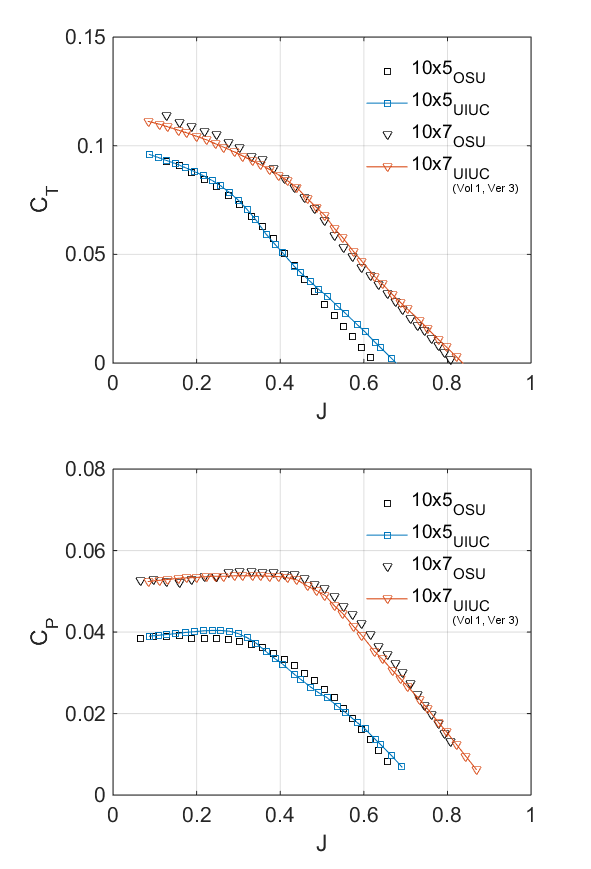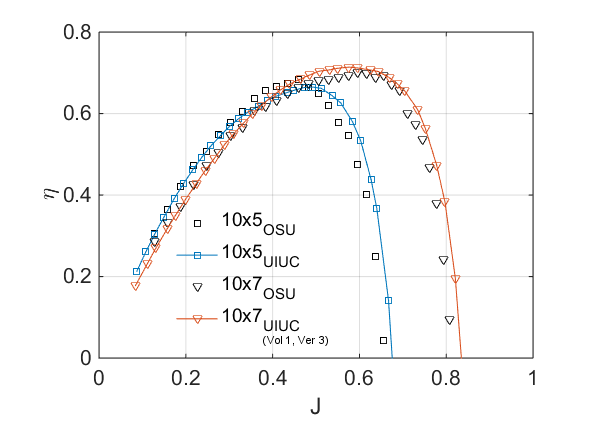It’s hard to believe, because it’s not explained. The article merely say:
Figure 2 conveys information about the effects of
altitude on piston airplane cruise performance. Failure
to grasp these principles explains the prevalent
misconceptions regarding altitude’s influence on range
and endurance performance.
How about explaining those principles ?  What about turboprop? (when disregarding effects of better efficiency at alt), or electric propeller driven aircraft. What about a ducted fan? Electric ducted fan?
What about turboprop? (when disregarding effects of better efficiency at alt), or electric propeller driven aircraft. What about a ducted fan? Electric ducted fan?
LeSving wrote:
Throw away the propeller, install a rocket engine, and the MPG will soar at altitude (compared with sea level)
Or install a jet engine!!
LeSving wrote:
I cannot understand that this has anything to do with the aircraft at all. It has all to do with the propeller.
Will having a CSU prop or fixed prop change any of that reasoning? I doubt as in theory it will have the same efficiency at the same IAS irrespective of altitude?
I think maybe a CS prop will indeed change things, but I honestly don’t know. Found another site that sheds some more light on this. It’s the “old friends” Michael Selig and others who has this database of airfoils. They also have this database of propellers for RC and drones.



Obviously propeller advancement, J, has nothing to do with pitch. Changing pitch will be the same as changing propeller, it’s another curve in the diagrams. Let’s assume at sea level we have the values “1”. At 10000 feet the density is 0.74 and the airspeed is 1.2. With a fixed pitch prop, and we do nothing except keeping constant RPM, the following will happen.
J will increase by 20% (1.2, because TAS increases by 20%) We start with the blue propeller at best efficiency point, which is J=0.5. Increasing J by 1.2 and we get a J of 0.6. The loss of efficiency will be around 15% (0.85). Reduction of Ct will be from 0.03 tp 0.02 (0.67). Reduction of Cp will be from 0.025 to 0.015 (0.6)
The overall thrust and power will be (it is not clear to me is eta is simply a relation of Cp and Ct, and therefore is included in Cp and Ct, but I assume so):
T = 0.74*0.67 = 0.5
P = 0.74*0.6 = 0.44
Obviously this will not work. The thrust as decreased to 1/2 of the original, and the aircraft will hardly fly.
A better approach is to operate the propeller to achieve best efficiency also at 10k feet. That means keeping J constant. This can only be done with a fixed pitch prop by increasing n proportionally to the increased TAS, v. Doing this, then Ct and Cp will be the same at 10k as it is at SL. The power and thrust will be vastly different. n is increased from 1 to 1.2. The thrust and power will then be:
T = 0.74*1.2*1.2 = 1.07
P = 0.74*1.2*1.2*1.2 = 1.28
This works much better, but the thrust overshoots a little. To get a thrust of 1 at 10k feet, we must increase n by a little less than 20%, let’s say 18%, but it’s hard to predict because changing n also changes J, Cp and Ct.
Anyway, to achieve the same thrust, power definitely needs to be increased.
For a CS prop, then J will increase. We will go horizontally in the Cp and Ct diagrams until J=0.6, increasing pitch along the way. Then we would have to go vertically up, increasing pitch along the way, until we get a Ct that exactly makes up for the density loss of 0.74. Ct has to be increased by 1/0.74 By coincidence in this example, we end up approximately on the red propeller, which has an increased pitch prop. This will create equal thrust, but to me this also looks like it will create roughly equal power as well, maybe even perhaps a bit less. With constant RPM, the only thing that changes is density (and of course the pitch). It ultimately depends on the Cp curve for the pitch setting.
There is a good article on Carson speed in a recent US AOPA magazine.

And I can confirm this – the TB20 the best MPG at around FL100-130. Wide open throttle (WOT).
Unfortunately for most of Europe you need to hold an IR to do this 
Peter wrote:
And I can confirm this – the TB20 the best MPG at around FL100-130. Wide open throttle (WOT).
I cannot, however. MPG should be more or less the same irrespective whether flying low or at FL130. Ask Joe Conrad about this. He really pushed that to any extremes you can imagine in his record breaking (and still holding) long distance flights.
What I see is that at lower altitudes it’s a hassle to fly, and there are turbulences, where at higher altitudes it gets increasingly impossible to fly LOP. That, in my case, defines the best altitude range.
I don’t know enough to argue this but one factor is pumping losses which are much higher at say 3000ft / 23" MP than at FL100 and WOT.
Other second order effects exist e.g. with a lean mixture it is better to use a lower RPM, and I have measured this, just about, on some flights. It is only of the order of 2% extra. That is 2200rpm versus my normal 2400rpm. But also at a lower RPM the mechanical losses are lower – as one should expect.
I can fly LOP (I fly just a little LOP the whole time, in cruise) up to about FL160 (ISA). Above that, “best power” is needed to reach the ceiling.
You list a turbo engine in your profile, and that’s a very different thing. The TB21 gets less MPG and has a shorter range than the TB20, every time. I think ultimately one pays the price for a lower compression ratio; the SFC scales with the square root of the CR. A higher CR = free fuel 
Peter wrote:
You list a turbo engine in your profile
That’s correct, but not so different at all in my case. Typically the Turbo’ed ones fly more economically at altitude. They’re designed to fly there, and have e.g. a lower compression ratio. In my case it’s a manual wastegate and the turbonormalized engine “operates” more or less like the normally aspirated, despite that I can let her inhale more air. Compression ratio etc. is exactly the same as the normally aspirated variant. That’s why I can fly low as efficient as with a non-turbo.
The RPM thing is true, but then the air is less dense at altitude, so that you need more RPM at altitude for the same efficiency against the air. I can fly 1900 RPM at 2000 ft, very efficient that way, but I can’t do that same thing at say FL100. The engine’s running a bit rough there LOP. And as I don’t know whether that’s still ok or not, I avoid a rough running engine whenever possible. I don’t know whether that’s a general rule or only true for my engine.
However, the same MPG over altitude seems to be some sort of rule. I was equally surprised when I found out that there’s no difference in MPG for non-turbo altitudes whether flying low or high. I once found a long explanation, that’s one of Carlson’s papers, and one with a Bonanza did some test flights for that.
What seems to be true, though, is that you can fly faster at altitude, but on a higher fuel flow, resulting in the same MPG. In my case, if I stay LOP, I see 150 KTAS at 2000 feet or at FL100 on the same fuel flow. The engine tends to be hotter at FL100 than at 2000 feet.
In my case, when I take the Turbo in I can do more speed, but not LOP. In principle it’s cutting down MPG a lot. I can adjust it very sensibly (just a little bit in) so that I can fly a bit more efficient than one would be without the turbo, but you arrive quickly on the edge of the red box when you want to stay on the lean side. I assume that an intercooler would help to keep the temperature low(er) and to increase efficiency, but this was not a 1970 development :-)
Efficiency has always been my primary goal, save for moments of pure madness  , when either driving a vehicle, or flying. I followed and studied the CAFÉ reports as they were published starting in the eighties, propagated thru the EAA.
, when either driving a vehicle, or flying. I followed and studied the CAFÉ reports as they were published starting in the eighties, propagated thru the EAA.
Not sure if already mentioned in the previous pages of the thread, but the original article by Carson is found here:
Fuel Efficiency of Small Aircraft
Just found a book “Piston Airplane Cruise Performance” from Melville R. Byington Jr. that is free accessible and gives a huge amount of information:
https://commons.erau.edu/jaaer/vol4/iss1/6/
Therein it is concluded that MPG increases over altitude, see page 18 (that is page 6 of the PDF).
Although this seems naturally logical I don’t see this. So I’ll have to look for the other paper. By the way it’s Max Conrad, not Joe. Don’t know why I got that wrong before.